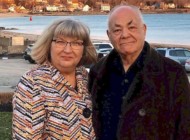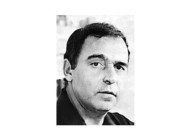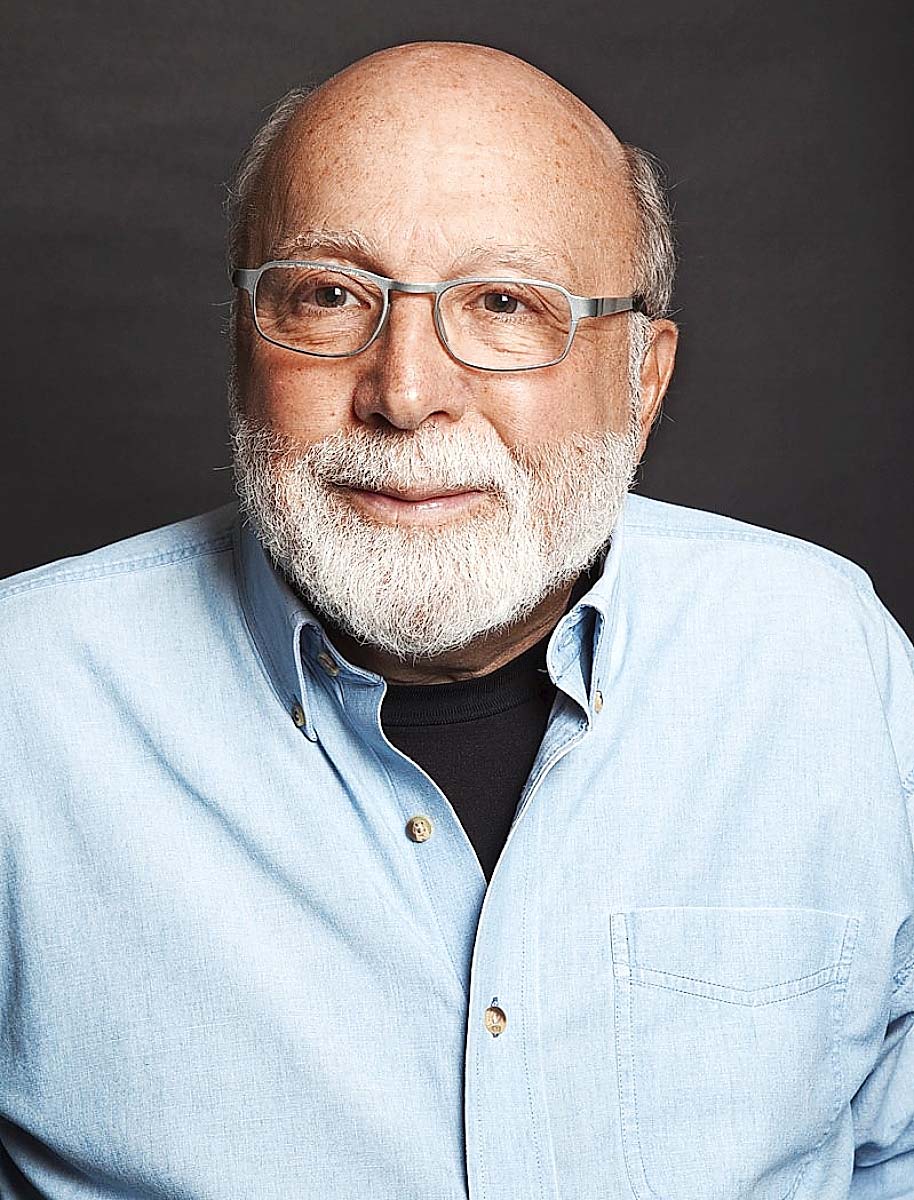
Sanford Smith. Courtesy Sanford L. Smith + Associates.
By Alex Johnson, Fine Books & Collections
Sanford Smith, who created numerous internationally recognized art fairs in addition to running the New York International Antiquarian Book Fair (NYIABF) from 1979 up to its recent 64th edition at the Park Avenue Armory this year, died on May 25 in Manhattan.
Known as Sandy to friends and colleagues, he began collecting comic books and baseball cards as a young boy, before studying at the Universities of Pennsylvania and North Carolina and then entering the family funeral business. His passion, though, was for art and he began collecting on frequent visits to antiques shops in New York and Connecticut. Believing there was a gap in the market for well-run art fairs, he moved into creating and managing his own, additionally taking over the reins of the NYIABF, described by The Guardian newspaper as “a kind of Glastonbury for bibliophiles,” and the Ephemera Society of America’s annual fair.
“Although Sandy was known mostly for his art fairs, within the book world he is well-known for creating the most prestigious and relevant antiquarian book fair anywhere,” said Webb Howell, publisher of Fine Books & Collections. “That he was an icon of the book world never got in the way of him attending to the needs of the individual, ensuring that every buyer and every seller had a good experience. My thoughts are with his family and his staff, all of whom he cared for deeply.”
The New York International Antiquarian Book Fair is officially sanctioned by the Antiquarian Booksellers’ Association of America (ABAA) and the International League of Antiquarian Booksellers (ILAB). Executive director of the ABAA Susan Benne said: “We are deeply saddened by the news of Sanford Smith’s passing. Sandy’s vision and business acumen were instrumental in elevating the ABAA’s New York Antiquarian Book Fair as the foremost event of its kind. His legacy will endure, and we have every confidence that his successors, Jennifer Stark and Nicky Dessources, will honor and further his remarkable achievements. Our heartfelt thoughts are with them, as well as with Sandy’s family, especially his sons Colin, Ian, Jared and Luc, during this difficult time.”
Sandy was a popular figure among the many book dealers who regularly appeared at the NYIABF. “Sandy was more to me than a business relationship,” said Allan Stypeck, president of Second Story Books. “He was a personal and warm individual who over the years became a close friend. Both Kim and I were extremely appreciative of his kindness to our girls every year, from toddlers to teenagers, when we participated in the NY Book Fair.”
Fran Durako, owner of the Kelmscott Bookshop, added: “He was always a presence at the New York Antiquarian Book Fair, and elicited both praise and concerns among exhibitors each year at this major event. The New York Antiquarian Book Fair has been very successful for its US and foreign booksellers, and Sanford Smith will be missed and will be remembered by us for his support of the antiquarian book community.”
Pom Harrington from UK-based Peter Harrington said: “Sandy Smith will be greatly missed. He transformed the New York International Book Fair into a world-class event and put rare books on the map. Peter Harrington has been exhibiting at the fair since 1997, and it was always evident that Sandy ran an exceptionally sharp show. He was tough, but in a city like New York, that’s what it takes to get the job done. He was, without a doubt, one of the finest promoters of rare book fairs and has done more for the rare book trade than most. His legacy will endure in the vibrant community he helped build.”
Ian J. Kahn from Lux Mentis, Booksellers, said: “For the 15 or so years we have done the NYC ABAA fair with Sandy, he was never anything but gracious, supportive and accommodating toward us. For at least the last 10 years, he always made a point to visit the booth, often reflecting upon how much he enjoyed what we brought and how we displayed it. I will always fondly recall the year Sandy, somewhat grudgingly, returned to the booth on a Friday and purchased something that had made him chuckle since seeing it the day before. He was very, very good at what he did and we will miss him.”
Sandy is survived by his four sons, five grandchildren and his wife, Jill Bokor. His first wife, Patricia Lynch, predeceased him. An obituary has also appeared in The New York Times.
[Editor’s note: Plans for a memorial service at the Park Avenue Armory are in the works, date to be announced. Donations may be made in his name to the Park Avenue Armory, Henry Street Settlement House, the ACLU and Planned Parenthood of New York.]
Sanford L. Smith (1939-2024) In Memoriam
During my career, I was president of both the Art Dealers Association of America (ADAA) and the International Fine Print Dealers Association (IFPDA) and ran both fairs, working with Sandy. His background was fascinating and he turned out to be not only a very effective manager of art fairs but also a great guy. He was very charismatic, a hardworking, wonderful gentleman who was a real character and — at times — a piece of work. I liked to joke with him that he should be in his office and not out on the floor. He made a career for himself and his organization and I am really sad he is no longer with us. I will miss him. He was a friend.
Richard “Dick” Solomon
President
Pace Prints
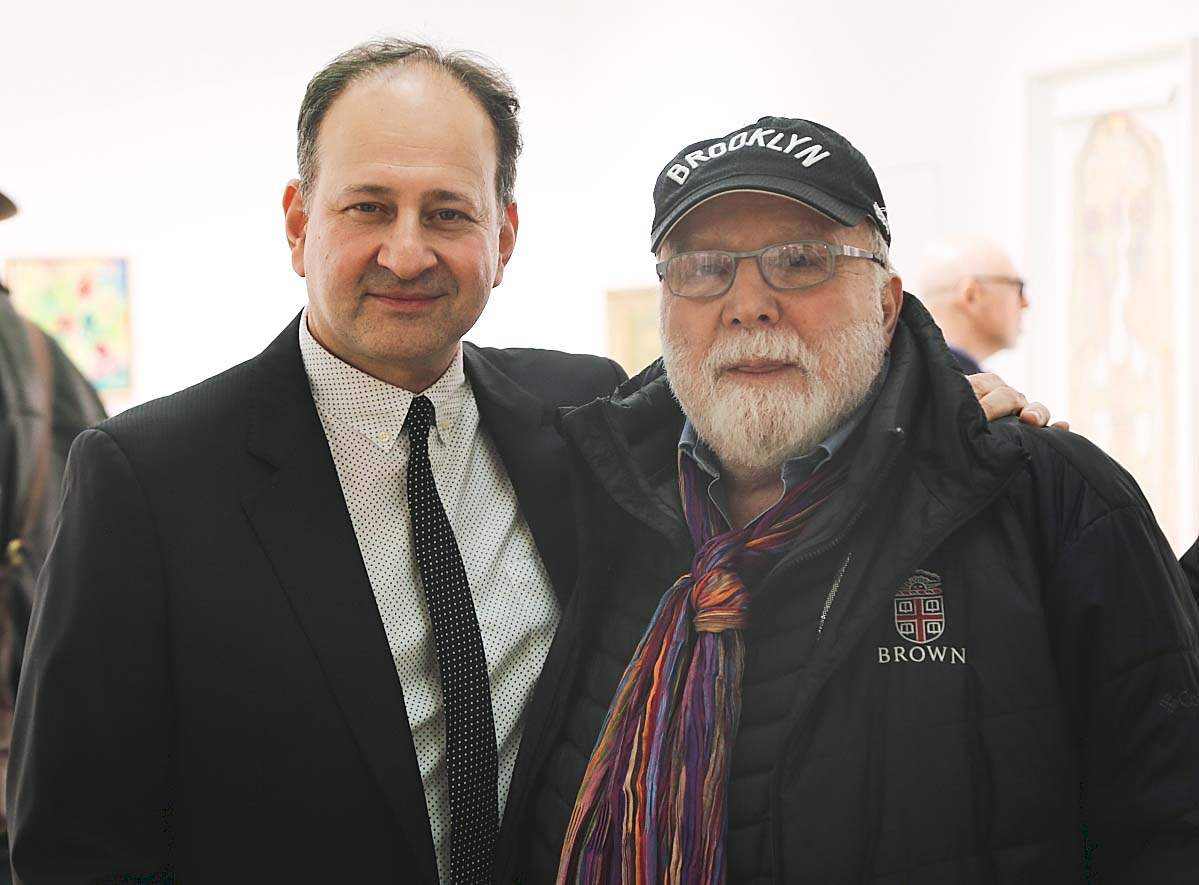
Andrew Edlin and Smith, 2013, Antiques and The Arts Weekly photo.
I first met Sandy in 1986, when he started the Modernism show at the Park Avenue Armory in New York City. We immediately got along well, and I instantly developed a great deal of respect for him and his intelligence. He had an incredible knack for fair promotion and operation. One very important thing about Sandy — and he would tell you this — he never lost money on a show. Considering the complexity of running a fair, that’s pretty amazing and something I would share with other people.
Everyone I knew loved working with him, and he had a group of men and women who worked with him who were very loyal. He treated everyone right, meaning that he paid them well, he talked to them properly, and he valued what they were doing. He really appreciated people. His dealers were most important to him; he did his best to make sure that his dealers were happy from move in to move out, and was only truly happy if everyone had a good and profitable show.
Sandy had very high standards for his shows. He expected dealers to bring a variety of “good” things and he was tough on people who brought fakes or reproductions. He regularly walked the floor to see how the dealers were doing, and he would make suggestions and offer advice to the dealers about how to improve their booths.
He singlehandedly radically changed the world of collecting when he started the Modernism show. Modernism led to a major shift in what people were collecting all over the world. Other promoters started copying his model for modernism shows, thereby spreading his influence, but none of them succeeded like Sandy.
For me, the true bottom line is that Modernism is responsible for the continuing existence of Moderne Gallery in Philadelphia. The first year that I did the show I picked up about 15 NYC clients that carried me through that year. Every year I would pick up more and more clients, not just from New York City but from all over. The show had that kind of reach. A number of good clients who we met at Modernism 35-40 years ago are still working with us. I have Sandy Smith to thank for that and for his great advice and close friendship. I will miss him greatly.
Robert Aibel, PhD
Moderne Gallery
Sandy was and will always be a friend. I first met him in the 1970s with my father; he was running Smith Gallery that I remember focusing on marine arts, something my father was very interested in. My major involvement with Sandy came with the International Fine Print Dealers Association (IFPDA). The association approached Sandy because they wanted a fair but did not have enough dealers in the late 1980s to put on an art fair themselves. Sandy came up with the idea of “Works on Paper” and launched that event in the spring; it was a great success bringing together print, photography, poster and drawing dealers under one room at the Seventh Regiment Armory in New York City. A few years later, the IFPDA had enough dealers to start their own fair and Sandy managed the Print Fair for more than two decades. In 1994, is my memory, but it is a bit foggy, I was asked to be the Print Fair chair for the IFPDA which put me into the fray with Sandy.
My first day as chairman of the Print Fair, Dick Solomon — the previous chair who had become the president of the IFPDA — told me to remember they named a street after Sandy. I looked at him and said, “Really?” He smiled and said, “Yes ‘one way.’” I quickly learned what he told me was true, there was one way to work with Sandy, agree with him or have an argument, which we had many of over the years. That being said, Sandy ran a tight ship as a show promoter. A tough but fair negotiator for both the association and the unions. This is why he had the same people working for him year after year; he may have been difficult, but in the end there was always a fair compromise that worked for both parties.
I do not remember exhibiting in any of Sandy’s antique shows, but my father could have early on. I did the Works on Paper fair for many years with him, the Print Fair and the Book Fair. We had spoken about the Salon Art and Design Fair when he came up with that idea. It was likely his finest fair, a beautiful event in the Armory, although I have never exhibited in it because the timing for me was not good, always near another fair I was doing.
Sanford Smith — a curmudgeon, tough to work with but fair in the end, always there to assist, support and collect from the dealers who exhibited in his fairs.
Robert K. Newman
The Old Print Shop, Inc.
I had a long relationship with him and worked extensively with Sandy and Sanford L. Smith & Associates as chairman and representative of the Antiquarian Bookseller’s Association of America; he was a great person to work with.
He was instrumental in helping us keep the fair at the Park Avenue Armory at a time when its mission was to be a performing arts center. His long association with the armory allowed the bookseller’s association to keep the fair there. It was the ideal size for our fair in a city where suitable venues are hard to find. His expertise in the management of fairs — from his relationships with the unions and the management of the Seventh Regiment Armory to the smallest housekeeping details — made him an invaluable partner.
He could be tough, which is good because he needed it to handle everything that makes a fair successful. I spoke with him very frequently — bringing issues the booksellers had to his attention.
In my very first encounter with him, when I was introduced to him by the former chairman, he said to me, “Do you know how I settle disputes? With a baseball bat.” When “Do you prefer wood or aluminum” rolled off my tongue, he laughed, and the ice was broken right away and we could work together without letting things get in the way.
While I’ve passed the chairmanship to my successor, I’m happy to report that because he had such a long-standing staff at Sanford L. Smith & Associates who have had key positions for a long time, things will keep going and the fair will continue to run…April 3-6, 2025, is the date of the next NYIABF at the Park Avenue Armory.
Donald Heald
Donald A. Heald Rare Books & Fine Art
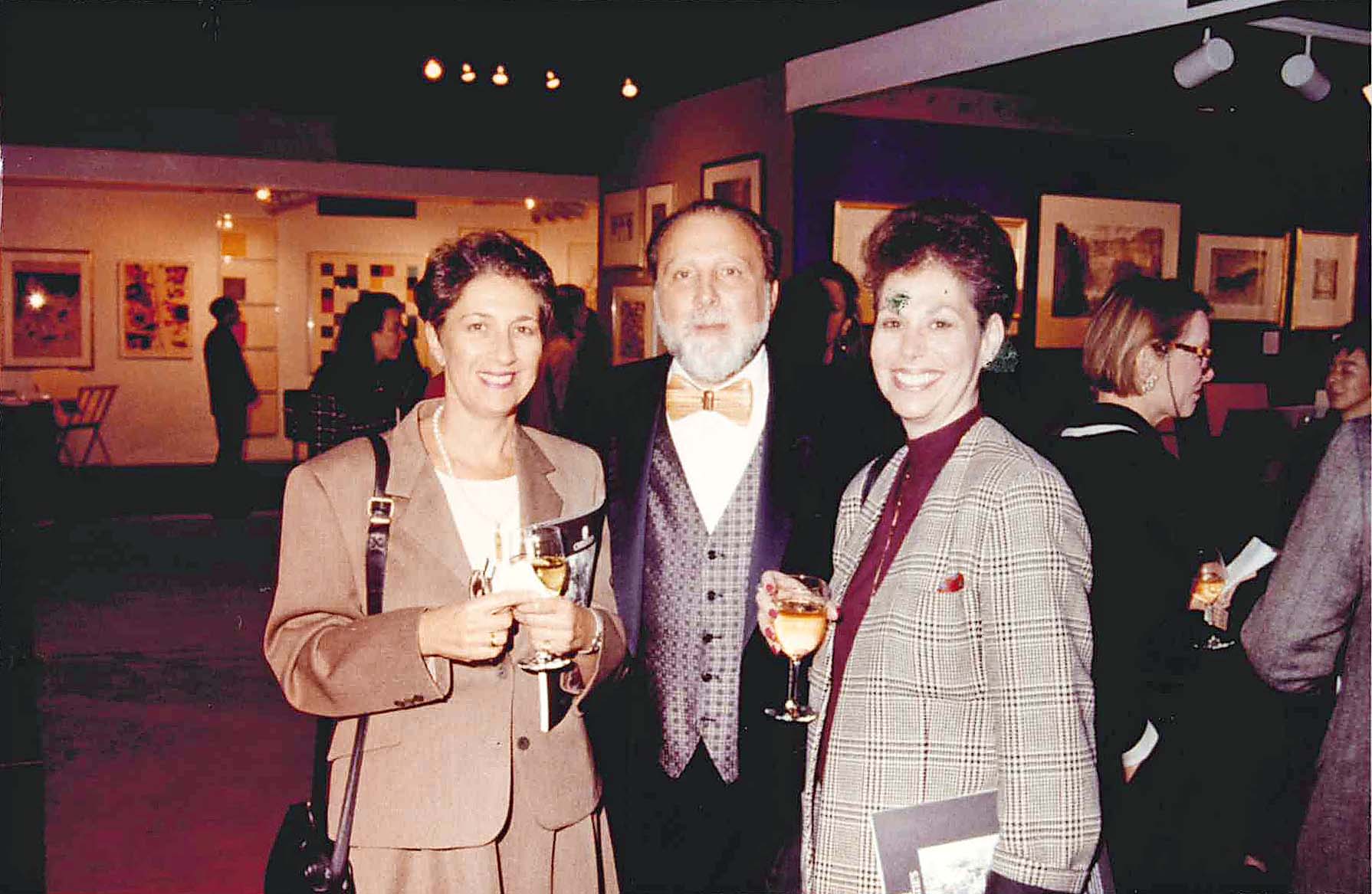
From left, editor of Country Living Rachel Newman, Smith and Helaine Fendelman, Fall Antiques Show, undated photo courtesy Sanford L. Smith + Associates.
Sandy and I had a meeting of the minds in, I believe, 2005, when I was doing a book fair with Bruce Gervetner and Gary Austin. He looked at me, said, “Jeff, you know books and bookstores in New York City, you need to come and step up your game!”
Two years later, I shared a booth at the armory book fair with John Kuenzig, which I did for two years before I got my own booth. There never was a show with Sandy when, at the end of the show and in front of everyone, he’d ask me, “So, Jeff, how’d you do?” I never remember him asking anyone else that.
I also remember that he would just come by the booth and sit down with me and he would always ask me, “Are you still doing well with me? Are you still doing well with the shows?” I’d say, “Sandy, it’s the best show in the world. It compares to nothing else in the book business, whether it’s overseas, California or Boston.”
Sandy knew how to bring the people in. It was certainly up to the sellers to bring in their customers, but the longevity and the location of the armory fair, it’s absolutely perfect for everyone in the book business. When I read an earlier obituary, I thought there was very little mentioned about the NY book fair, it was more about what he did with the art world. Yes, the art world is important, but in the book world, without the Sandy Smith book fair, there would be no book business!
My success comes from this show and my longevity in doing it, from friendships made with the fine booksellers and customers I’ve met in the 17 years doing it.
I’m saddened by his passing. I saw him at the last book fair; he was in his wheelchair but he was very cognizant, very talkative. I’m just so lucky that I’m part of it. The people he had working with him are wonderful. He said he was passing it on; I hope that transpires. Our business will be lost without it.
Jeff Bergman
Jeff Bergman Books
I first met Sandy when Sanford Smith & Associates took over the NY Book fair. I’m also originally a native New Yorker and we were all from the same neighborhood, so it was a little community from day one. Sandy had a specific sweetness towards a lot of the booksellers and he was like an uncle to the booksellers who brought their kids to the show; our girls were brought up at the fair. When they first came — as toddlers — he would give them room in his office to play; once he brought in a small toy village in a bucket to keep them occupied. There was a natural kindness to him that even when he was stressed, he could switch gears when the kids were around. The first thing he would always ask was, “Did you bring the girls?” That was the natural Sandy.
I remember that my girls liked to go around with Windex and clean the glass for other dealers. I asked Sandy if that was OK and he said, “Make sure they charge enough.” I told them to charge $1 per case; one bookseller gave them $5. They said it had been David Lesser so I went to David and told him I appreciated it but that I didn’t want to spoil them. They came back saying, “Mr Lesser said to keep the money but not to tell you he said to keep it.”
Over the years, Sandy and I retained a very natural friendship and we would make purposeful time during the show to chat. It was what made Sandy such an extraordinary ally and component of the bookselling community. His art fairs were much more high profile but he understood the bookselling community and gave everyone the same attention, from high profile art and book dealers to assistants on the floor. Everyone worked cohesively and he was the driving factor in all of that.
Allan Stypeck
Second Story Books
It is hard to think of an individual who did more to shape trends in the art and antiques world over the past half century. Sometimes brash and always bold, Sandy Smith was a quintessential New Yorker who thought big and brought the field along with him. A weekend warrior when he began dabbling in antiques in the 1960s, Smith soon revealed his gift for organizing upscale, niche shows at a moment when fairs were ascendant, and specialization was on the rise among dealers and auctioneers. Working with the Museum of American Folk Art, the first of many organizational partners, he tapped into a global wave of interest in country furniture and folk art to launch the Fall Antiques Show in 1979. He followed with Modernism, Works on Paper, the Photography Fair, the Outsider Art Fair and the Salon Art + Design, among others. Behind the scenes, Smith was a canny businessman who knew how to get things done in New York City, a city famous for its fractious unions and fraught politics. He never tired of show business, nor of the journalists who promoted his events. He took an avid interest in the trade and was generous in sharing his knowledge with this media outlet and many others. Sandy Smith will be missed.
Laura Beach
As a young antiques and art dealer starting out in the ‘70s, I first met Sandy as a fellow exhibitor on the Wendy show circuit. Sandy always had an encouraging word and when he started running his own shows, he reached out to me and encouraged me to exhibit in them. His were some of the best and most innovative shows that first introduced me to some of my best clients.
Jim Bakker
Bakker Gallery
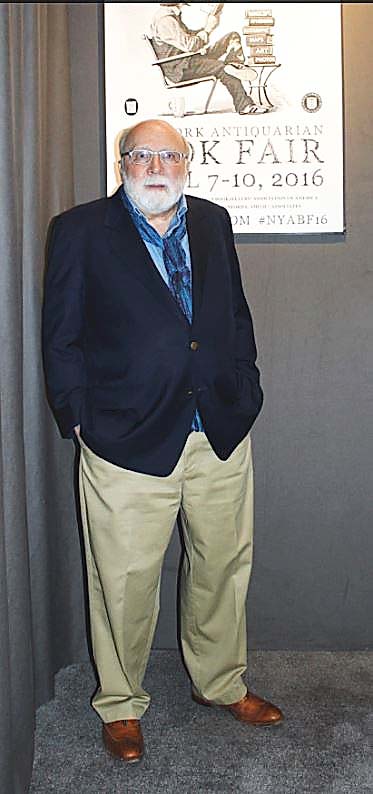
Smith, New York International Antiquarian Book Fair, April 2016, Antiques and The Arts Weekly photo.
I’ve known Sandy Smith since 1985, when I first opened a gallery in New York City when I was too young to be opening a gallery! Sandy was incredibly supportive by admitting me to some of his well-organized and sought-after art and antiques fairs. He was always very supportive to the dealers, especially to the young dealers. He was a big influence on me and my career and we remained friends until the end.
The first art fair I ever did with him — it was so long ago and so different then than what they are now — was a much more casual affair. It was in a field in Morristown, N.J., where he erected a big tent. Just as we finished setting up before the show opened, a tornado tore through New Jersey and it ripped the top of the tent off and art and antiques went flying. We came back to find the partially destroyed show with water in everything. He said to me, “Get all your stuff together, the show will go on.” And it did! He was the impresario who kept things going.
I participated in the IFPDA’s print fair in the Park Avenue Armory, which opened a day after Hurricane Sandy hit New York. At the time, I lived downtown, and my apartment had no electricity; the ConnEd power station in Brooklyn had literally blown up that morning. You couldn’t imagine anyone could get a show up and running when no-one had any power. And though things were better farther uptown, it was still a lot of work to pull everything together, but he made it work. His staff passed around t-shirts that said “We Survived Hurricane Sandy” and those of us who were there knew it was referring not to the storm Sandy but to Sandy Smith, who had been hysterical for 24 hours to get the show opened on time. He would go and tell everyone to “March in line, get things done!”
He was full of imagination and really thought through an idea and saw it to completion.
They broke the mold with Sandy; we’ll all miss him terribly!
Susan Sheehan
Susan Sheehan Gallery
New York City
I met Sandy in 2004, when I was part of a group who wanted to save the Park Avenue Armory. He was just terrific and always so supportive of the armory from the beginning and generous with his gifts; he really is part of the fabric of the armory.
He always kept us up to date on what was going on, with little bits of gossip, and he offered advice freely and happily. He had a very positive, proactive attitude towards things. He was always asking “How can I help make this work?”
Whenever he was in the building, he’d pop up to see me, and when he didn’t pop in, we’d miss him.
Rebecca Robertson President and Executive Producer
Park Avenue Armory
Sandy was a uniquely special person and he cared about our city and the arts in such profound ways. He was deeply dedicated to Henry Street Settlement and our partners at the Art Dealers Association of America (ADAA) — he cared about the success of The Art Show, the ADAA member galleries and the fair’s special philanthropic mission to raise vital funds to help make a difference in the lives of children and families. He was personally and professionally generous and will be deeply missed.
David Garza
President & CEO
Henry Street Settlement
Sandy Smith loved the Americana field. He had the concept of creating the first “All American Show” at the NYC Upper East Side Armory in 1979. Word spread quickly about this ground-breaking event. Fresh out of college, Kathy and I were consumed with Americana and folk art. We heard about the show and immediately contacted Sandy who, of course, never heard of us. Nonetheless, he handed us an opportunity by accepting us into the show. We credit him for giving us our first big break. We joined the ranks of Larry Whitley, Ed Fuller, Brian Riba, Tim and Pam Hill, Harris Diamant, Stephen Score and others at the Fall Antiques Show. The excitement was indescribable. Sandy was a visionary and, in many ways, was responsible for creating the Americana and Outsider Art market as we know it today. He will be missed.
Fred Giampietro
New England Auctions
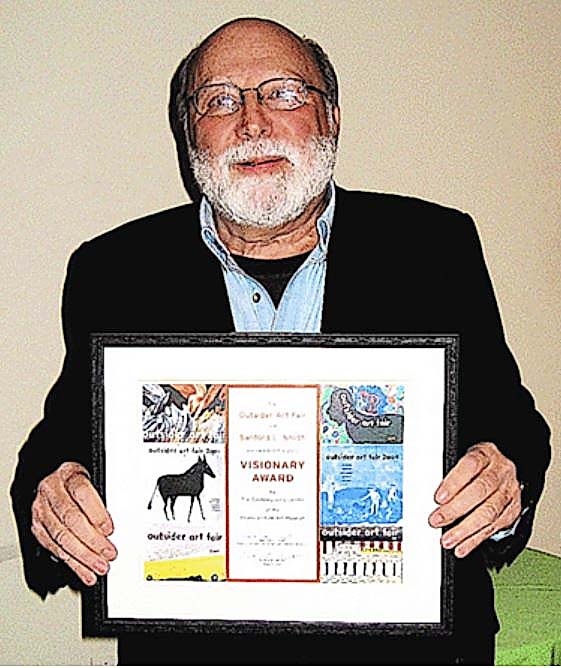
In February 2010, Smith was awarded the American Folk Art Museum’s third annual Visionary Award.
Sandy Smith was my first introduction to the New York City scene in the mid-70s. He created the first Park Avenue show featuring American dealers, specializing in folk art with related furniture and decorative parts exclusively.
Sandy had that special New York vibe that attracted sophisticated customers. He was a master of selecting the best established dealers and the newest upcoming dealers from across the United States. The energy of that show was astounding and remained that way for many years to follow.
Sandy created a unique market that propelled the new younger dealers into prominent recognized specialists in their fields of expertise.
I am grateful to Sandy for his insight and confidence, which added greatly to my success as an antiques and art dealer. Sandy knew what dealers wanted because he was a dealer as well and could relate to their needs.
The Modernism show was also a creation mastered by Sandy. His insight into emerging markets and trends produced enthusiasm that still has ripple effects today. Thank you, Sandy, for your professionalism and recognition. I know that I am not alone when I say how much Sandy was appreciated by the antiques dealers that he worked with.
Gary Sargent
G. Sargent Antiques
Woodbury, Conn.
Sandy Smith put Americana and folk art on the map. He was truly an icon in his field! His fall shows gave dealers — and our wares — an audience and an exposure we never could have achieved on our own.
As a dealer, where else could you ever expect to get a call after a show from Barbra Streisand wanting to know if an object she had seen in your booth was still available, or looking up and seeing Paul Newman and Joanne Woodward eyeing one of your pieces (I almost fainted when Paul Newman took off his glasses to get a better view of a painting!) or looking up and seeing Paul Simon sitting on one of your Windsor chairs that was up on a plinth, or Andy Warhol offering us a copy of his newly published magazine called Interview?
Yes, it was exciting and lots of fun, but the most important thing gained by exhibiting at Sandy’s shows were the incredible and lasting friendships we all have made with our fellow dealers and collectors! PRICELESS!! (“So precious that it’s value cannot be determined”).
And now I am sure Sandy Smith is still doing his magic and is sending out contracts for his new show “away from home” to all of those beloved dealer friends we have lost. A group we will forever miss!
A very grateful dealer,
Barb Pollack
Sandy and I were a year apart at the University of Pennsylvania and while I didn’t know him then, I met him when I did the first folk art show. After that, I got to know him well. He was a genuinely good guy who really cared about his dealers.
He had a house in the Berkshires for about 20 years and he would come to my shop a couple of times a year to see how the Americana world was doing.
Sandy grew up in the family funeral business on New York’s Lower East Side and because of that, he was a consummate New Yorker and very much thought about what went on in New York as the center of the world. He cared about how New York would react to things; it was one reason he did so well promoting his shows.
He recognized and respected the changes in what people were interested in — I think that was why he stated the Modernism show. He adapted to changing tastes very successfully.
He — and the folk art museum — were instrumental in creating the market for folk art and its popularity, and from that, Outsider art, which has become hugely popular.
He was, in short, a market maker.
Sam Herrup
Samuel Herrup Antiques
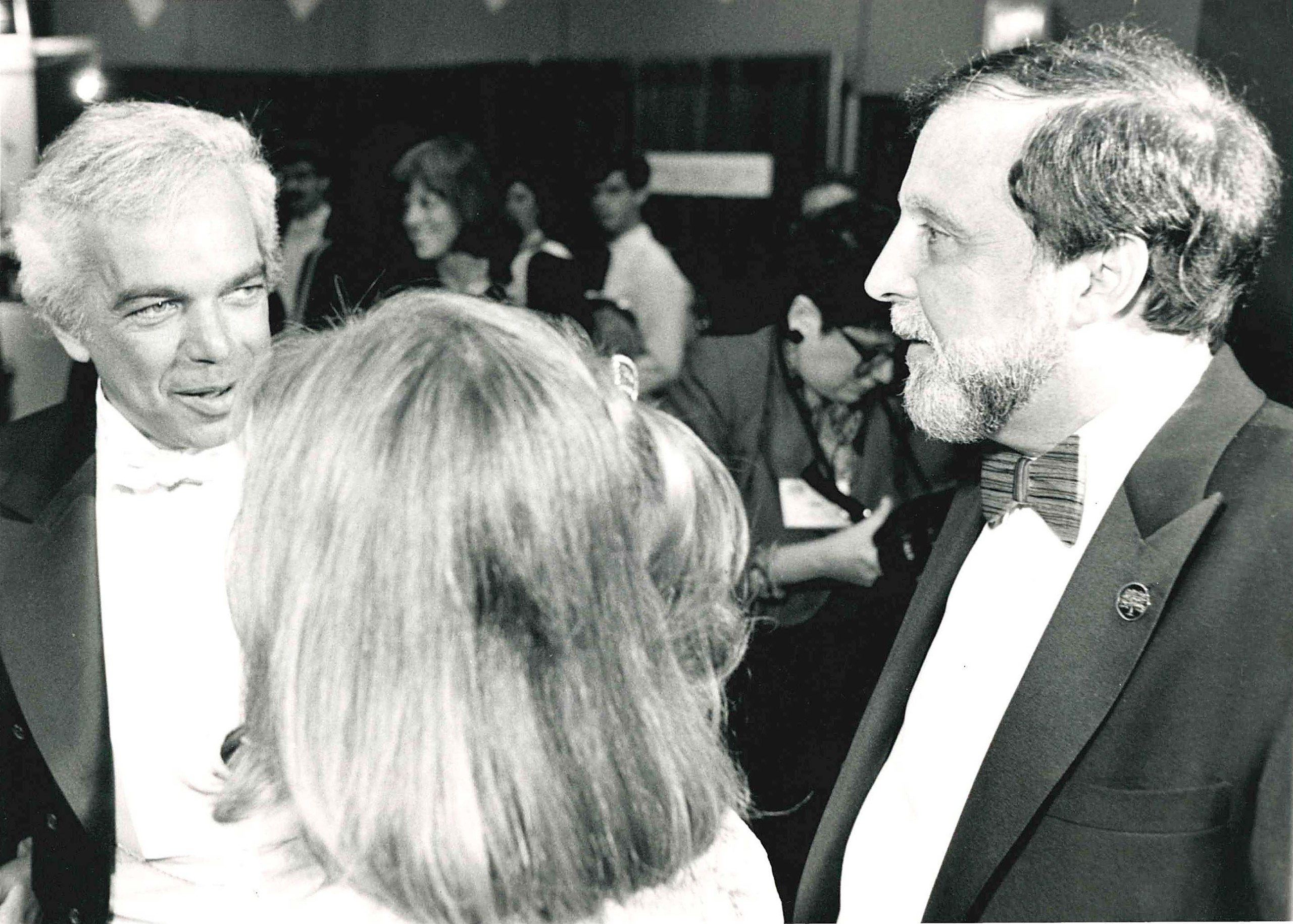
Ralph Lauren, left, and Smith, right. Fall Antiques Show, undated photo, courtesy Sanford L. Smith + Associates.
Sandy Smith was a bold show promoter who brought young dealers, as well as seasoned veterans, with unusual ideas of beauty in merchandise to the Fall Antiques Show at the Park Avenue Armory. This show was so different that it made the cover of New Yorker magazine and the dealers were referred to as Young Turks; if that was not enough, the preview party was catered by a young Martha Stewart. It was an amazing time to be in the antiques business. Three years later, Sandy followed this successful show with Modernism, dazzling the public with stellar Twentieth Century material.
I was an exhibitor for the full 20-plus run of these shows and fellow dealers and customers became lifelong friends. Thank you, Sandy, for being the first to include antique and vintage fashion in a major show.
Katy Kane
I first met Sandy when, as a teenager, he attended a summer camp at Gardner Lake near Colchester. One day, he hitched a ride to our shop, which was about 5 miles from the camp, and came in and looked around for awhile before he started talking to my dad. That was probably 70 years ago.
Later, my father and I were doing a show at the Park Avenue Armory; I think it was March, but I don’t remember what year. Sandy was managing the show and when he saw us setting up, he came over and said, “A funny thing just happened. I was riding the elevator in my building and met a guy who also lives there who asked me, ‘Don’t you like antiques.’ When I told him I did, he said, ‘I have an old table I inherited from my family. I don’t like it, I don’t want it, I want to get rid of it. Can you help me?’” Sandy arranged to meet the guy and got photos of the table, which he showed to us. It was a great — and I mean great — Massachusetts Queen Anne dropleaf table, the best quality, the best design, the best wood; it was a “10!” Sandy asked us, “What should I pay the guy?” We told him we would pay him a certain amount if it turned out to be right. Well, he bought the table from the guy and brought it into the show and put it in our booth; it was, indeed, a “killer” table! We made Sandy a nice profit and he was beside himself. We put the table right in the front of our booth and Albert Sack walked in, thought it was a great table too, and bought it then and there. It was from the estate of Sophie Ripley Ames Boyer, of the Boyer family of Concord, Mass., and was in the house in Concord when Ralph Waldo Emerson lived there. It is included in Volume VII of American Antiques from Israel Sack, pp. 1920.
Arthur Liverant
Nathan L. Liverant and Son Antiques
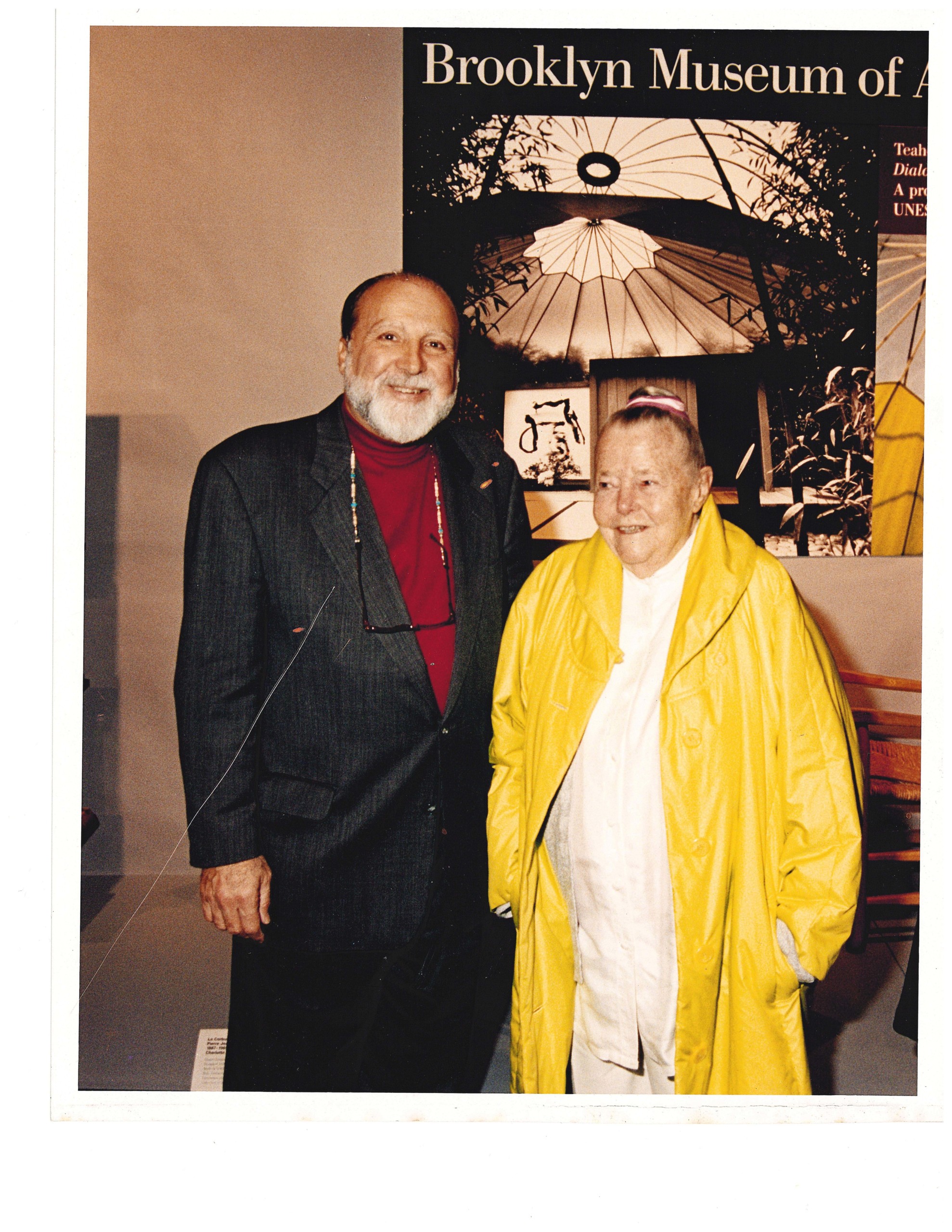
Smith and Charlotte Perriand at Modernism 1997. Photo courtesy Sanford L. Smith + Associates.
They broke the mold when Sandy was born. He was truly one of a kind.
Sandy’s vision changed many people’s lives, including my own. The first Fall Antiques Show was an extraordinary coming together of the “young bucks,” as he referred to us. It was the first time that Americana was given its own venue. Both the dealers and public found it exciting in a way they had never imagined.
The following year, there were doubters when Sandy moved the show from the ideal East Side Armory to the wilds of the Pier on the West Side. Once again, he was right. From that point, he became like the Pied Piper, with dealers and clients believing in him enough to try his Modernism Show, The Great American Quilt Festival, The Salon and others he created.
Sandy was a force like no other. Many will feel his absence.
Stella Rubin
Dear Friends,
Sad news travels quickly and the passing of Sanford “Sandy” Smith came much too soon.
If there was one word to describe Sandy, I would choose “Pioneer,” as he embodied the meaning breaking new ground in the antiques business that benefitted countless antiques dealers, collectors and nonprofit institutions…yes, a true Pioneer.
I first met Sandy as a young dealer who was honored to exhibit at his Fall Antiques Show benefiting the American Folk Art Museum, which in many ways launched my career and that of many other dealers. Had it not been for Sandy’s bold initiative working with Dr Robert Bishop and an amazing show committee, the words “Folk Art” would still be a mystery.
How does one say farewell to an industry icon…two words, Sandy Smith.
Frank Gaglio
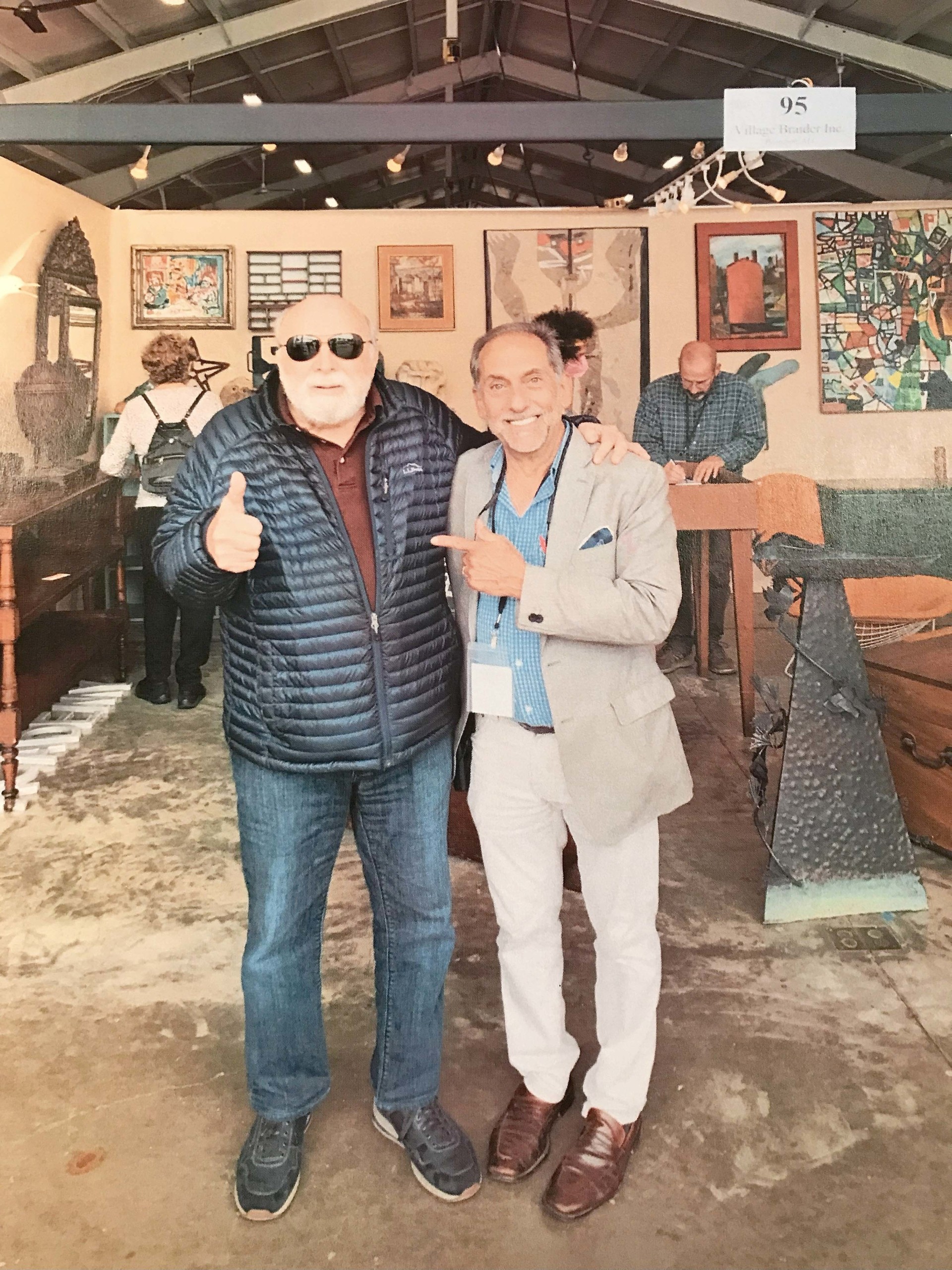
Smith and Frank Gaglio, Spring at Rhinebeck show, 2019. Photo courtesy Frank Gaglio.
Sandy Smith was the first promoter to find what I was doing — concentrating on the original art by illustrators for children — valid and let me have a booth at the Fall Antiques Show and later at the Works on Paper fair. This was a great opportunity since many of the works I had in my booth were watercolors.
He never scoffed at new ideas and was open and enthusiastic about introducing something different at his shows.
I also remember his enjoyment after reading that Allan and I were married. And then ours for him when he and Jill were married.
Sandy remained a friend, pleased with every step along the way as I spread the word about the art I loved and an audience opened up and grew to appreciate it.
His energy and enthusiasm will always be remembered fondly.
Kendra Daniel
Sandy was a successful and energetic show promoter, friendly, upbeat and personable. He intuitively understood what would attract customers and was generous to his exhibitors, making sure they were properly provided for.
Personally, he and I go back a long way. I took over the lease on his gallery at 76th Street off Madison in 1989 and opened The American Folk Art Gallery. Even earlier, we bought and sold to one another.
His presence will be missed.
Allan Daniel
We knew Sandy for decades, not as exhibitors in his shows, but as part of the overall antiques and arts marketplace. Long ago, I saw an ad by Sanford Smith who was the advertising director for the New York Pennsylvania Collector trade newspaper. There was no harm in asking, and he did say “yes,” for many, many years. We began to know him as friends, and as a very honest and competent show and fair organizer. Whether paper or art, or books and antiques or collectibles, his talents and hard work — and above all his integrity — gave so many not just incomes, but friendships. Even last year we told a friend who does his book fairs, “Say hi to Sandy” and he replied, “Nice to hear from you.” That was Sandy!
Fran and Herb Kramer
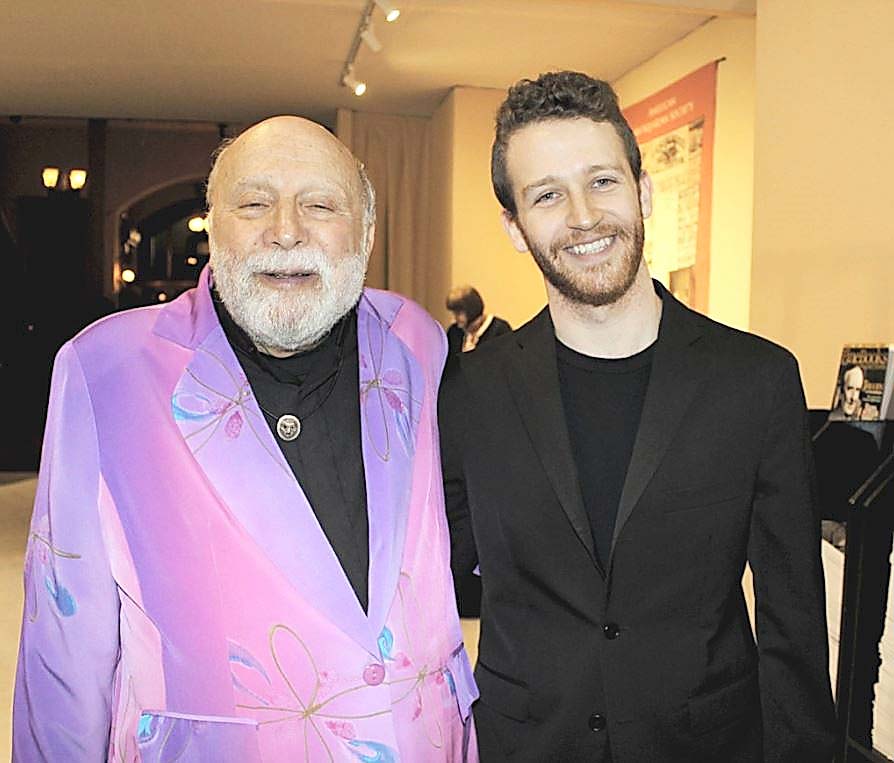
Smith and son Luc Bokor-Smith, March 2019. Antiques and The Arts Weekly photo.

